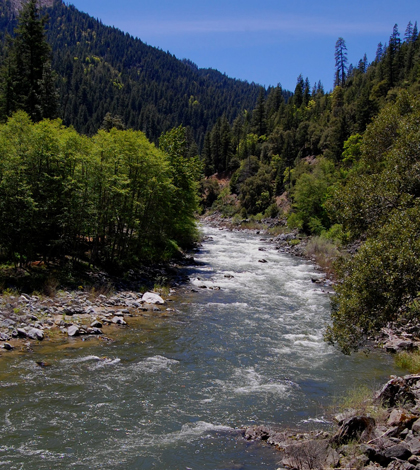UC Davis groundwater tool helps threatened salmon and steelhead

A groundwater management tool in the works at University of California Davis aims to address streamflow conditions for salmon and steelhead fish in the Scott River Valley. The fish are threatened by rising water temperatures and low stream flows, especially in dry years.
To address those concerns, scientists used decades of data gathered by state and federal agencies to estimate daily pumping, diversion and recharge of water across the Scott Valley in northern California.
“We obtained a lot of useful information from meetings with the local Groundwater Advisory Committee, the Siskiyou County Resource Conservation District and other stakeholders,” said Thomas Harter, faculty and Hagan endowed chair in Water Management and Policy at the university.
It’s important to improve streamflow conditions, Harter says, because these fish – the juvenile coho and chinook salmon in particular – need water temperatures well below the mid-70s Fahrenheit to thrive.
But how can streamflow be improved?
Harter says better management of groundwater discharge into the stream and riparian techniques, like using vegetation as shading, could help. The Scott River is undammed, so a lot of water runs through the river each year.
“But what seems like a bounty during winter storms and spring runoff doesn’t last through the summer,” said Harter. “And being without a dam means there are no means to store some of the winter bounty of water above ground for use in the summer.”
Harter and others are considering many different management options for the river valley, most aimed at increasing late summer streamflow and managing water temperature. Options on the table include increasing surface water irrigation during spring and early summer when streamflow is higher, allowing beaver dams to stay undisturbed and switching from groundwater pumping to surface water irrigation where possible.
Using a software developed by the U.S. Geological Survey – MODFLOW – the UC Davis team has developed a conceptual outline of water and land in the Scott River Valley. The model can then be used to predict changes in groundwater levels, the exchange of water between streams and groundwater and the resulting flows of the Scott River. To make the predictions, the model plugs in hydrogeology, topography, recharge, pumping and flow diversions. It’s a complex tool for a difficult task.
Harter says the Groundwater Advisory Committee has prepared a management plan for the valley which lays out long-term objectives and a framework to manage groundwater resources. The plan has been adopted by the county board and several future options for improving streamflow have been suggested. The UC Davis team wants to assess the management options using the integrated hydrologic model as the main tool.
“This includes various ways of increasing recharge to the aquifer while surface water is plentiful, changing pumping patterns during the critical late summer period, but also potentially developing beaver dams,” said Harter. “Ultimately, a mix of various management practices are likely to be pursued.”
Top Image: Scott River in the Scott Valley (Credit: Mark Levisay, via Flickr)





0 comments